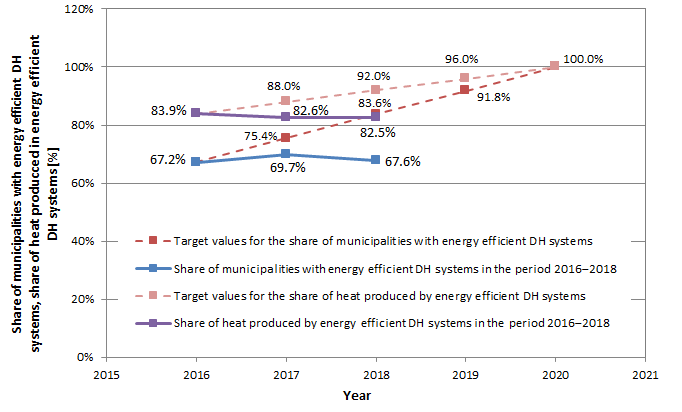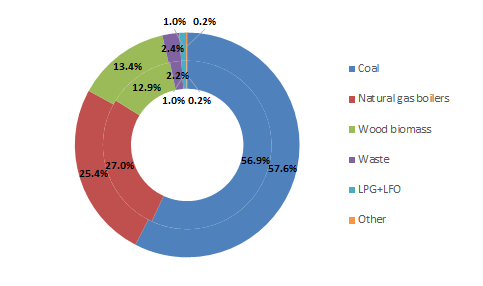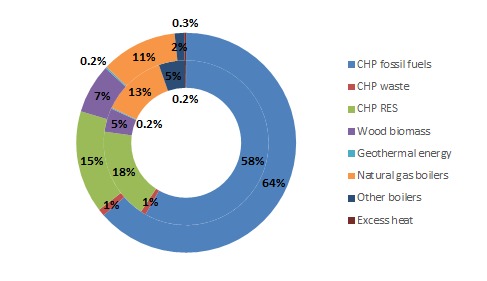-
-
-
-
-
-
-
-
Tools and collections
- Environmental atlas
- EIONET in Slovenia
- Environmental indicators
- IED devices
- Endangered species
- IS-waste

-
-
Tools and collections
- Environmental atlas
- EIONET in Slovenia
- Environmental indicators
- IED devices
- Endangered species
- IS-waste

- Home
- Podnebno ogledalo
- [PO] EU - ETS
- Share of energy efficient district heating systems
[PO28] Share of energy efficient district heating systems

Key message

In 2018, 68% of all municipalities with district heating (DH) had energy efficient DH systems, i.e. systems that meet one of the criteria defined in Article 322 of the Energy Act. Compared to the previous year, the share decreased by a good 2 percentage points and the lag behind the 2020 target increased to 32.4 percentage points. 82.5% of all heat produced from DH systems was produced in energy efficient systems, which is similar to the previous year. In the fuel consumption structure, the predominance of coal and natural gas decreased slightly, by 0.9 percentage points to 83%. Greenhouse gas (GHG) emissions from these systems are high and their reduction can only be achieved by replacing old coal units and gradually replacing fossil fuels with renewable energy sources (RES).
Charts
| Coal | Waste | Wood biomass | CNG+ELFO | Natural gas | Other | |
|---|---|---|---|---|---|---|
| 2017 | 0.57 | 0.02 | 0.13 | 0.01 | 0.27 | 0.00 |
Methodology
The indicator methodology is available only in Slovene (link to the indicator)
Barbara Petelin Visočnik, JSI-EEC, prepared as part of project LIFE ClimatePath2050 (https://www.podnebnapot2050.si/)









